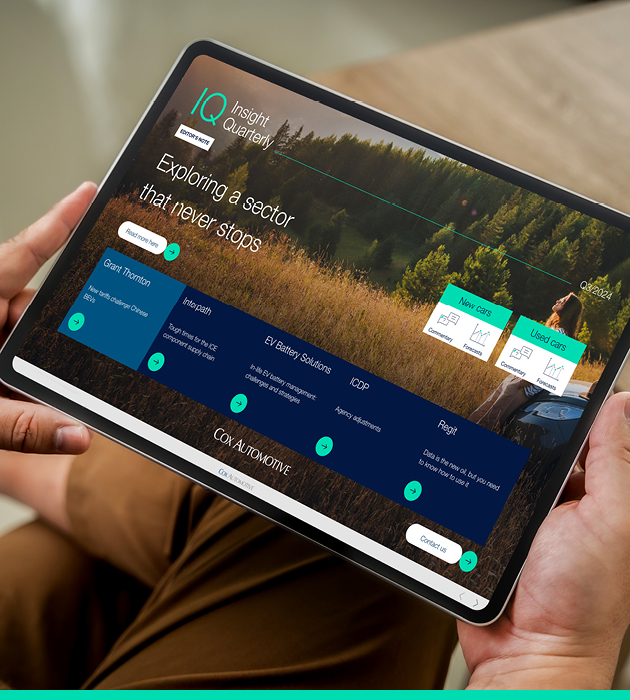OEMs can and must do more to keep pace with automotive disruptors – if they want to help usher in an easier buying experience for consumers.
That was the broad conclusion of a panel discussion at FT Future of the Car. Entitled “Creating a Frictionless Automotive Retail Experience”, the conversation featured Cox Automotive, Tesla, Kia, ALD Automotive and McKinsey & Company representatives.
They spoke on the meaning of ‘frictionless’ in the automotive context and the fact that some OEMs are struggling to adapt to the newer, hot topic “agency model”, where manufacturers directly manage the relationship between consumer and OEM, effectively reducing the role of dealerships to that of a handling agent.
Adrian Porter, Director Strategic Partnerships, ALD Automotive, told panel host Sarah White that some OEMs are simply not ready for an agency model. He’d been surprised, when dealing with some OEMS, how ill-prepared they would be in implementing such a strategy.
He said: “The agency model isn’t a single model, it’s not black and white and OEMs are operating at different speeds. Some OEMs are not ready for it.
“Transitioning through 100 years of selling through a dealer network to trying to sell online…in some cases they haven’t understood the complexity of the administration process and all of the IT investments required.”
Porter, whose company provides vehicle leasing and fleet management services, cited one example of discussions with an OEM about how a proposed agency model might work.
“So, we’d gone through the whole process in terms of ‘OK, so you have the ability to sell us the car, not the dealer.’ So, we said ‘OK, when the car is delivered you then need to send us the invoice’.”
“Without missing a heartbeat, they said ‘no, the dealer will send you the invoice’. We had to say, well no we’re buying the car from you, so you need to send us an invoice. They hadn’t considered the fact that invoicing was something that they would now need to do.”
Porter insisted that there has been a widespread change in how cars are sold, but that there was still very much a place for the dealer in the process.
“OEMs cannot underestimate the role that dealers play, in terms of sales admin, customer service, aftersales etc. They need to pick that up if they want to, you know, replace the dealers.”
In terms of measures taken by large companies to make consumer interaction more frictionless, Porter said his work with Amazon had highlighted how important fewer clicks with a mouse are to them in making the buying process easier.
Cox Automotive’s Karoline Baumann, Strategy Director Europe, gave her thoughts on the growing popularity of the agency model to make retail more friction-free.
She said: “Across Cox Automotive, we have digital and physical products that span almost the whole vehicle lifecycle, from new to used car.
“Customers want choice and trust plays a big part in that. There isn’t one customer journey that fits everyone. Consumers want to jump in and out of online and offline parts, at different points in the process. But how do you facilitate that?
“Agency is at a very early stage, we haven’t actually seen that many OEMs go really big scale with that.”
Baumann insisted too that automotive is a long way off from becoming an entirely online experience.
“You still have a vehicle that needs handling along its ‘journey’. We did a survey with about 3,000 customers and used car buyers.
“It became quite clear that over 90% said that a joined-up experience is important for customers.
She thinks the wide variety of processes and platforms needed makes frictionless retail extremely challenging in automotive as it’s so difficult to implement.
So, there’s still a role for dealerships in this new age, the panel thought.
Porter said: “Even the likes of Tesla who are not looking to ‘dealers’ need that in-person structure to take care of the customer. It’s about customer care, the car is not a live thing, but it does need servicing now and then. People want to feel there’s some infrastructure behind this very expensive thing they’re driving around.”
Tesla’s Stephanie Booth, Sales Lead EMEA, told the panel that her company had a real advantage over traditional OEMs in building from the ground up without a legacy model.
“We built the customer journey with the intention of making it an enjoyable experience”, she said. “Getting to the customer before they’re even in that consideration phase.”
She admitted, however, that there will “always be” customers who prefer an offline in-person experience.
She said: “It’s the second-biggest purchase that most people make, aside from their home. So, it’s a matter of facilitating that choice, whether it’s fully online, fully in-person, or a mixture of both. We constantly evolve and take customer feedback to make sure we’re advancing to meet their requirements.”
The more traditional OEM view, in the form of Kia’s Carlos Lahoz Pardo, Vice President of Sales and Ownership Experience, is that his company has been working for a very long time in this area. He says they are working hard to eliminate friction and improve customer satisfaction. New trends including digitalisation and electrification have changed the game, but Kia wants to provide a solution.
He said: “As a manufacturer, we want to be able to provide the solution. We want to integrate the traditional ownership customer journey with the new digitalisation and the usership model that is coming into the industry. We are in a transition process.”
Karoline Baumann finished the insightful discussion, reiterating the complexity of a vehicle’s lifecycle, underscoring the fact that partnerships will likely always be needed.
She said: You can sell a car digitally, but there are still the operations that sit behind it. You’ve got to deliver the car to the customer. What happens if they have a part-exchange? What happens with servicing through the lifecycle? The car journey doesn't end when it's given to the customer and that requires a certain setup and partner network to make that happen.”



